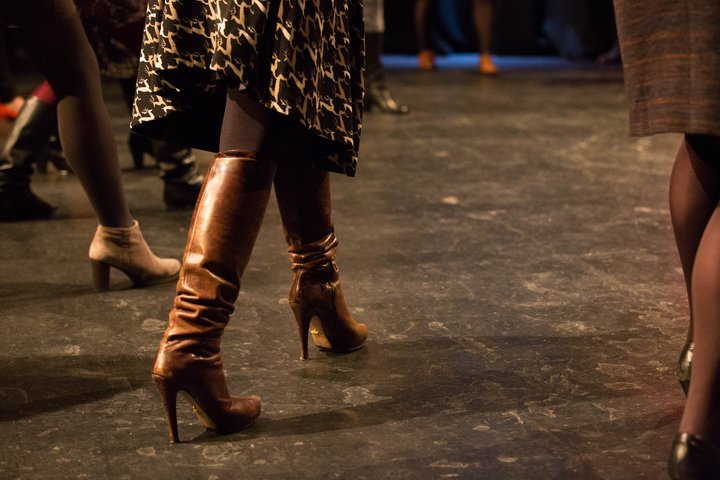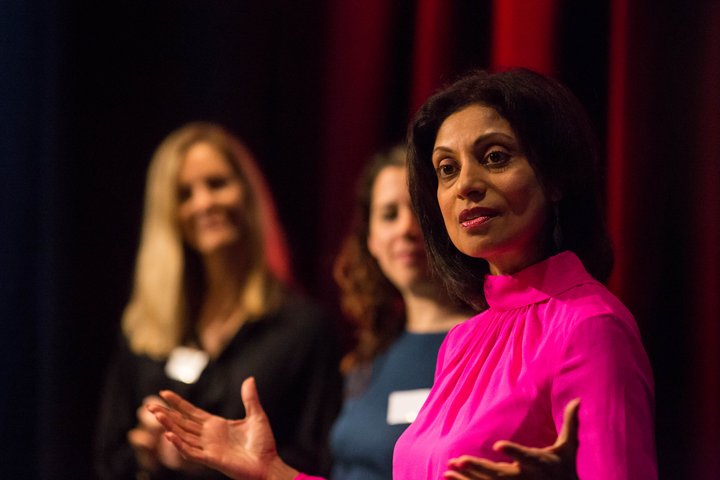Back to the office: are women taken less seriously at work?
It’s been two years since the world of work was turned on its head. During that time, numerous reports have talked about the disproportionate effect of the pandemic on women, from widening the gender pay gap to taking on the burden of unpaid care and domestic labour.
But is it true to say that the pandemic has set women’s careers back? Are there any positive outcomes to explore? Or have the last two years exacerbated a centuries-old issue?
We caught up with Executive Presence for Women tutors Sheelagh McNamara and Lisa Åkesson to get their thoughts.

The ‘broken rung’ effect
In her book The Authority Gap – released in paperback on 8 March 2022 – author Mary Ann Sieghart looks at years’ worth of data to explore the everyday, unseen bias that impacts women at every level of their careers. Sieghart believes that, even without the pandemic, women have always been taken less seriously at work, and that is still the case today.
This is something RADA Business tutors Sheelagh McNamara and Lisa Åkesson can also see.
"We know that girls perform better than boys in the earlier stages. They talk earlier, they've got wider vocabularies, they learn self-discipline earlier, they get better grades at school. More girls go to university than men,” Sheelagh says.
But something happens when women enter the workplace. Sheelagh points to consultancy firm McKinsey's annual Women in the Workplace study, undertaken with the LeanIn organisation, which focuses on American corporate culture. Over the last few years, the survey has identified a phenomenon called the ‘broken rung,’ which refers to that first step from entry-level position to manager.
2021 data showed that, for every 100 men promoted to manager, only 86 women are promoted, and the gap widened when looking specifically at Black women and women of colour. As a result, men outnumber women significantly at the manager level, which means that there are fewer women to promote to higher levels. Consequently, there are then fewer women in positions of leadership.
The impact of workplace culture on self-belief
As Lisa says: “This trend is not to do with women's competency but their confidence, which can be impacted by varying degrees of self-doubt – sometimes called ‘imposter syndrome'. When you combine this with a backdrop of conscious and unconscious bias, where women are told – implicitly, if not explicitly – not to be too loud, bossy, greedy or too ambitious, then it can often hold women back from putting themselves forward and asking for what they need or want.”
So, as is the case for all individuals, women’s working environments feed into their sense of identity. If they aren’t working for a supportive organisation, they may start to doubt themselves. In some cases, the combination of an unsupportive environment and internal self-doubt can create a culture where women are indeed taken less seriously than their male counterparts.
This is why supportive environments are key to helping women and marginalised groups climb the career ladder. The general pervading workplace culture has not, historically, been supportive of women, but – even if the impact of the pandemic remains to be seen – there have been definite improvements in recent years.


The pros and cons of remote working for women
For women, as for everyone, the last two years have been challenging. There’s the fatigue generated by back-to-back meetings, having to manage conversations remotely, the isolation, the increased possibility of working in a silo, the conflicts that arise from having to work exclusively in a domestic environment.
However, Sheelagh and Lisa have noticed some positives, particularly in terms of women who feel they have had increased opportunities to interact with senior colleagues. “Remote working breaks down global barriers,” Sheelagh says. “You might suddenly have access to leaders in other countries, and be able to get in front of them, to have a conversation and receive immediate answers.”
Physically, remote working can also offer advantages. “Some people feel that digital meetings are equalising, because everyone is the same size on screen. You all take up the same space. If you’re a shorter women used to working in an environment with more physically imposing men, that’s a refreshing change,” Sheelagh says.
But of course, remote working is not equalising for everyone. As Lisa says, “not having the opportunity to network and socially engage has been very challenging. For women who are more introverted and prefer to work in smaller social groups, there’s less opportunity to just have a conversation. So for those women, what tends to happen is that they just speak less.”
Looking to the future
Whether they are working remotely or in an office, empowering women to make their voices heard is a key component of the work Sheelagh and Lisa do on the Executive Presence for Women programme. So, what particular challenges do they think women face?
“In general, women do have a harder time in the workplace,” Lisa says. “For example, if a woman interjects she is more likely to be seen as aggressive than if she were a man. That behaviour is just seen as more acceptable in a man.”
“We’re not working on an even playing field,” agrees Sheelagh. “However, things are better now than they were 10 or 15 years ago. For example, if you look at some of our world leaders – men as well as women – there is a move in leadership to something we call ‘empassertiveness.’ It’s a combination of the traits more stereotypically associated with women; that is, kindness, empathy and collaboration, as well as that assertiveness more stereotypically associated with men.”
Sheelagh points to politicians such as American Vice-President Kamala Harris, former President Barack Obama and First Lady Michelle Obama, as well as New Zealand’s Prime Minister Jacinda Ardern and the Canadian Prime Minister Justin Trudeau as showing elements of this empassertive style of leadership.
“My personal belief is that we need this combination of qualities in all our leaders,” Sheelagh says. “The world has changed.”
So while we still don’t know the extent to which the challenges of the last two years may impact women, with more leaders modelling this kind leadership it seems that change is, at least, on the horizon.


Spotlight on: imposter syndrome
While there is reason to be optimistic, one common theme Sheelagh and Lisa address with the women they work with is this sense of imposter syndrome. It’s something many of us face and, with more and more people returning to the office after nearly two years of remote working, such anxieties might feel even closer to the surface than usual.
If this sounds like you, then take a look at our in-depth exploration of Imposter Syndrome here – including insight from Lisa, and a simple technique to try the next time imposter syndrome comes knocking.

